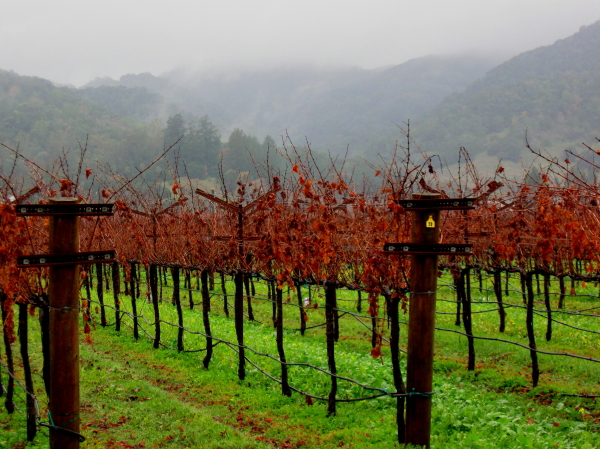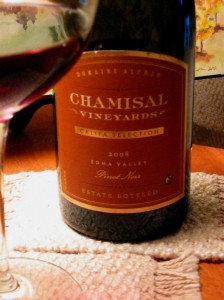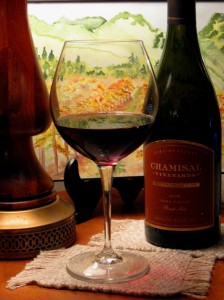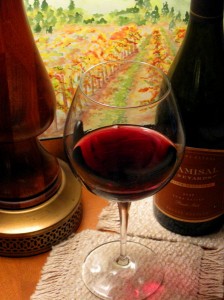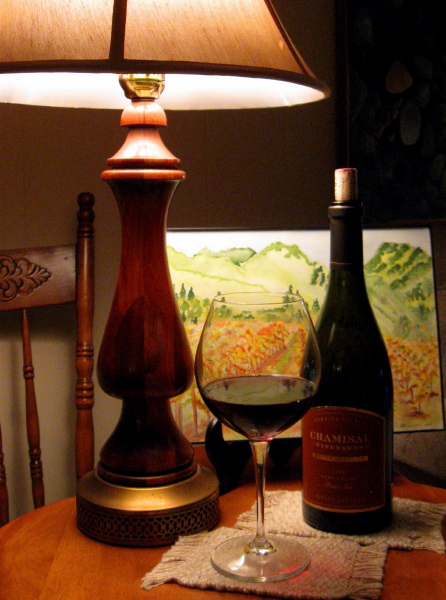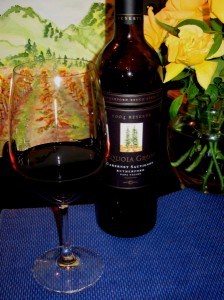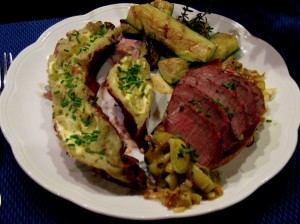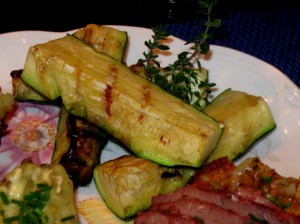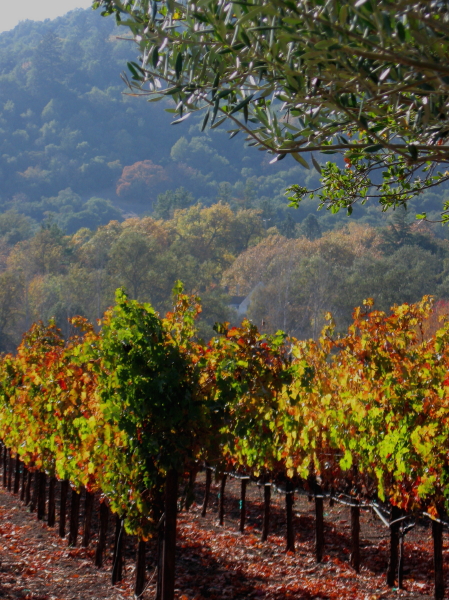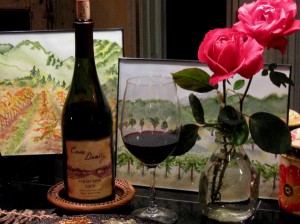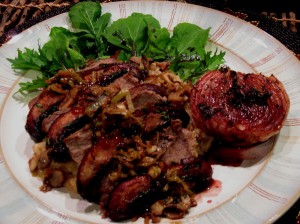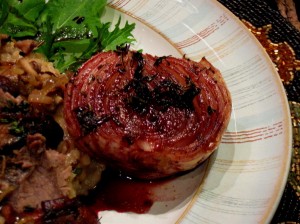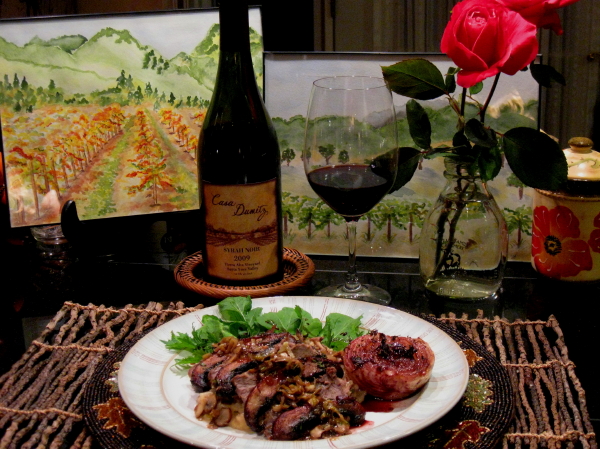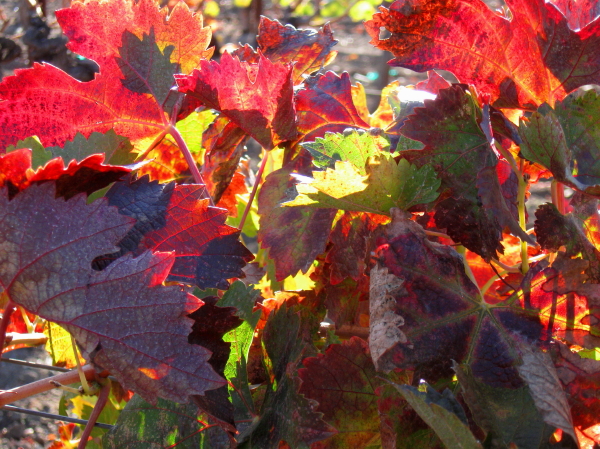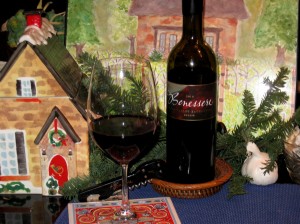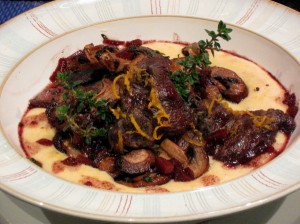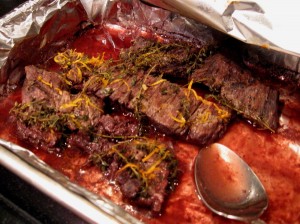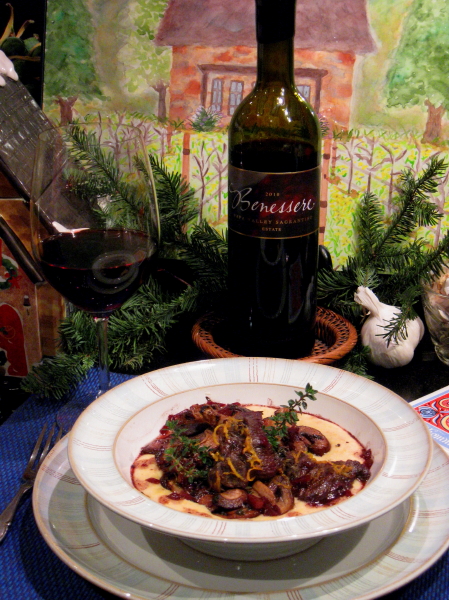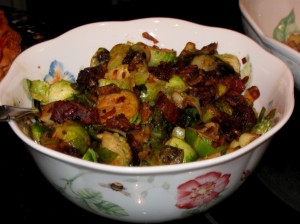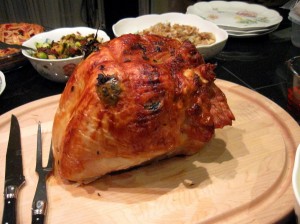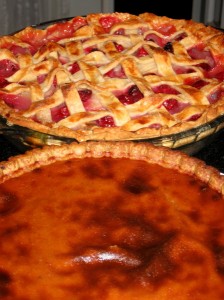Jan 16 2014
When You Want Just a Glass of Wine
Whether it is the end of a taxing day, a quiet evening or perhaps an evening when one finds himself or herself nostalgic for tranquil afternoons wine tasting in California wine country, sometimes one wants simply a glass of wine. This desire for a lone glass of wine may be driven by the need for less fuss and more simplicity in one’s daily life. It may be a wish to have a glass to slowly sip at while painting or writing. Regardless, wine does not always have to pair with food and given the theme of my web site, it certainly does not have to be shared with great fuss.
Without dispute, wine is romantic. It awakens the senses if one takes his or her time with it. The nose opens to find aromas of various fruit, herbs, flowers, spices, wood, chocolate, desserts, smoke or tobacco at times. Just taking the time to take in the aromas of a good glass of wine before indulging the palate takes the senses on a journey. The palate rarely disappoints the connoisseur as it experiences not just flavors ranging from herbal, sweet to acidic but it also processes texture as wine can be silky, smooth, velvety, tannic and drying or perhaps guide and command with a firm structure. Even the most uncreative, nonplussed fool can become romantically expressive with a few sips of wine.
Nearly every single article that I have written over the last several years has devotedly paired a particular bottle of wine with a recipe that I have created around that bottle of wine. These tailored pairings are fun, but not so long ago in the past, during a conversation with a friend, the discussion of how I went about this in the beginning ensued. The simple answer is that in the very beginning, during the first year of the web site, I would plan to open the bottle of wine either several hours before I would have to prepare a pairing or I would open it the day before and simply take my time with a singular glass of wine. This was done to get to know the wine, to experience it on its own and to know what I was dealing with: was it overly tannic and in need of fat in a pairing; was it more acidic and longing for a tomato-based recipe; did it have such herbaceous aromas and flavors amid dark berry fruit that it whisked you away mentally to a damp St. Helena Redwood Forest Floor; and the list goes on . . .
Looking back, I have decided that from time to time, it would be nice to feature a wine without a food pairing. The intent is to simply visit a singular glass of wine, to contemplate its attributes all by its lonesome. This week’s article is doing exactly that.
To make it a bit different, this week’s article also takes us to San Luis Obispo County as a reminder that the site does have its “SLO Vine” column and if you find yourself tasting in the area, the column is a nice resource of recommendations. I have some more articles coming forth in the following weeks featuring a number of wines and different varietals from the area so please make sure to check the column or join the web site’s Facebook Fan Page.
Chamisal Vineyards was the first vineyard in San Luis Obispo County and while it has changed hands over time, the vineyard has remainded true to its sense of place and plantings yielding award-winning Pinot Noir, Chardonnay, Grenache, Syrah and some Pinot Gris. Given the vineyard’s proximity to the ocean and location at the southern end of San Luis Obispo County, Chamisal Vineyards is situated to experience some of the longest growing seasons in the state of California. The fruit harvested from the vines and painstakingly made into wine show off everything from the soil, the climate, the prize winning fruit and the long growing season.
Pinot Noir and Chardonnay thrive in this area of California and are similar in character to that found in the Santa Maria AVA of Santa Barbara County. Chamisal Vineyards primarily makes two (2) Pinot Noirs: Estate and Califa. Both yield grapes from the estate vineyard, the Califa bottling however yields the higher quality fruit. The winery describes the wine used for their Califa wines as “the most opulent, seductive and powerful barrels of the vintage.” Year after year, these vintages are wonderful and the palate is never disappointed.
In my possession, I still have some of Chamisal Vineyards’ 2008 Califa Pinot Noir. This vintage in particular was as close as the winery has seen to its 2004 vintage which almost scored 100 points in rating. That 2004 vintage was the highest rated wine in San Luis Obispo County history.
The coloring for the 2008 Califa Pinot Noir is rich and ruby-like. It reminds you of deep red velvet and with warm lighting nearby it picks up jewel tones.
The bouquet of the wine presents notes of ripe red cherries, smoke, bits of oak and spices inherent to the winery and property. In the mouth, the palate delights to discover sugared red cherries, lingering flavors of roasted fennel, gentle notes of milk chocolate and toffee finished with a juicy red plum and a beautiful note of candied lavender. The wine gives the illusion of being tart on the entry, but as it coasts back across the palate, it is as smooth as silk and shows off perfectly balanced flavor. Pinot Noir itself as a varietal is historically acidic but with this wine, the acidity is masked and hidden by exquisite estate fruit.
Each sip allows the palate to explore the wine a bit more, finding each of the above-described flavors. Similarly as the glass of wine “opens up” over the course of a few hours, the wine warms and the flavors become fuller and increasingly flavorful. Flavors of candied cherry trace the lips and roof of the mouth long after the sip of wine is gone. If a wine could leave a kiss, Chamisal Vineyard’s Califa Pinot Noir does.
If one were to fixate on serving this wine with a meal, the pairing questions are complicated. The difficulty, however, only rests with the fact that this wine is intuitively special and it merits perfection (since it carries itself that way in the wine glass on its own). Easily coming to mind, however, is a roasted rosemary balsamic pork dish adorned with a cherry-red wine reduction chutney.
While this might be a pairing in the making, another sip allows the palate and mind mull and encourages one’s creativity to unfold and yield perhaps what else one might do . . . Cheers!
Comments Off on When You Want Just a Glass of Wine
